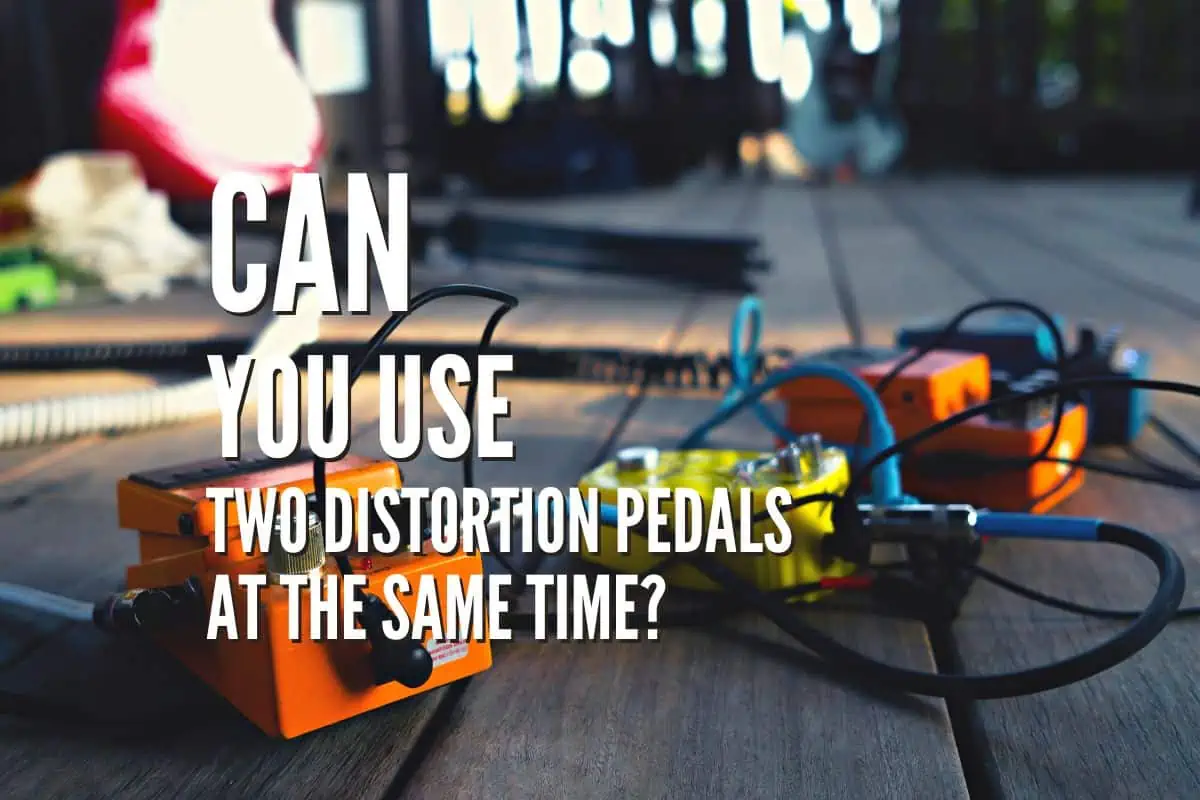When it comes to guitar pedals, there is so much room for experimentation and creation. Gain pedals such as overdrive, distortion, and fuzz pedals became some of the most loyal friends of guitarists. But can you use these pedals together? Actually, using multiple distortion pedals can give you great options to create fascinating guitar tones.
Using two distortion pedals at the same time is called stacking, and it creates a bold and heavy sound. This way, you can intensify the effect and alter the overall characteristics of your sound. But, if you want to take it that way, you must learn about the signal chain, the interplay between the pedals, and the impact on your guitar tone.
Stacking multiple gain pedals is one of the main staples of many guitarists. The gain stacking comes with some rules to get the best out of your tone. Figuring out which pedal goes first and which goes second and setting adjustments are crucial to get a good tone. But, when you find the sweet spot, it enhances your tone significantly and gives you much more options to shape your sound.
In this article, I will explain some tips to stack distortion and gain pedals overall to show you how you can get the best out of the “gain stacking.”
What are the Gain Pedal Types?
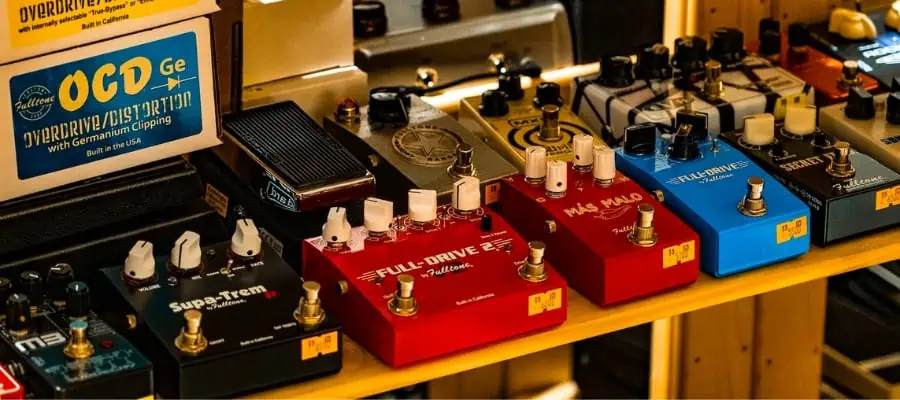
There are three main distortion pedals. Often, guitarists use distortion, overdrive, or fuzz pedals for gain stacking. You can use two of the same pedal type or combine different two or even three to get the sound you want.
So, it is important to understand the difference between these pedals.
- An overdrive pedal takes your initial tone and pushes it to a harder realm where the sound gets slightly distorted.
- A distortion pedal changes your tone almost completely, saturating and distorting it a lot to create a heavier sound.
- A fuzz pedal is a more aggressive and more compressed distortion pedal that creates an even more square and heavier tone than a standard distortion pedal.
What is Gain Stacking?
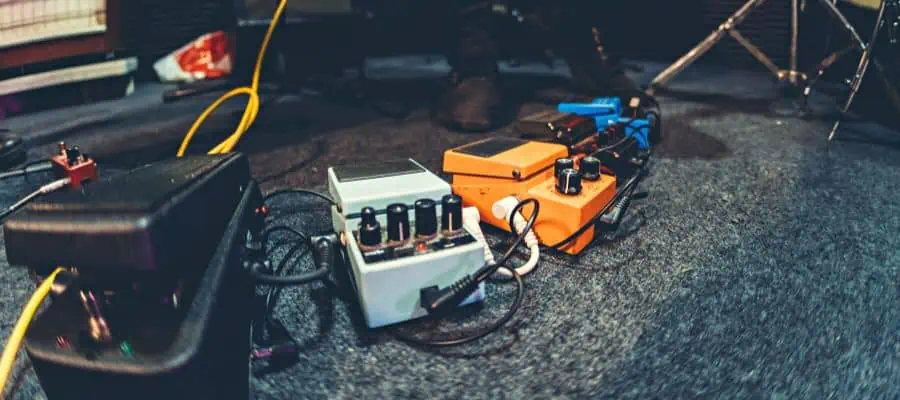
Gain stacking is basically connecting one distortion pedal to another to reach different effects. This way, you can intensify the distortion effect and shape it as you like. You can get complex and rich sounds with different textures if you understand the interplay between pedals and how they must be ordered in the signal chain.
For instance, combining an overdrive pedal with a more aggressive fuzz pedal can give you a versatile and harmonically dense guitar tone. Experimenting with different dirt, aka gain pedals in the same pedalboard with gain stacking, can provide the player with tailored distortion tones and nuanced textures.
Tips For Gain Stacking
While gain stacking has a lot to do with experimentation, there are some tips that can help you understand the approach and guide you through the process.
Last Pedal Decides The Tone
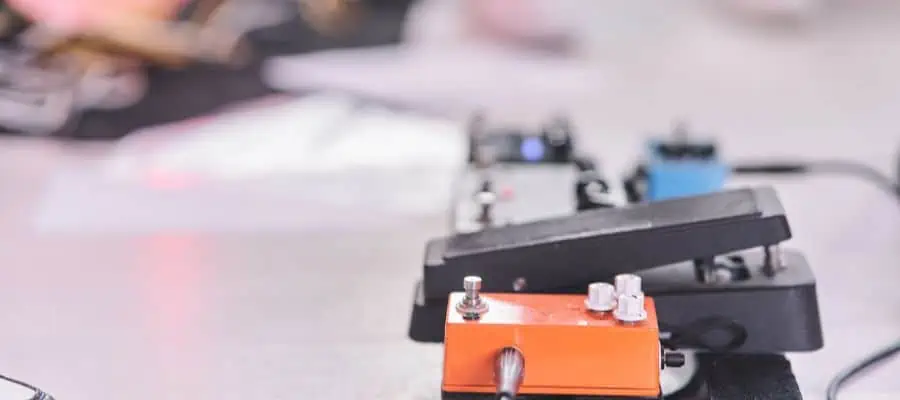
When using two distortion pedals, note that the last pedal on the chain decides the overall tone of your signal. So, let’s say you have a TubeScreamer and a Plexi Overdrive in your chain. As Plexi comes later, it will be acting as the getaway for the TS. This means that the Plexi will change the clipping and EQ of TS, changing how the TS sounds.
As you may know, TS is a mid-heavy pedal that cuts brilliantly through the mixes. But, when the signals reach Plexi, depending on the controls on the Plexi, like treble and gain positions. So, the mid-boost from TS will be slightly eliminated by the mid-cut from the Plexi, and the TS will act only as a gain boost for more saturation. This will create a bigger “wall of sound” for a fuller sound.
So, if you like the tone of a gain pedal, you should use it as the last gain pedal on your chain.
Transparent Gain Pedal As a Gain Boost
You can use a transparent gain pedal like a clean boost before a gain pedal to use it as a gain boost or after a gain pedal to use it as a volume boost. So, if you do not want to color or change the first gain pedal in the chain, you can always go for a clean boost pedal to use as the last step.
The First Pedal’s Volume Is the Second Pedal’s Gain
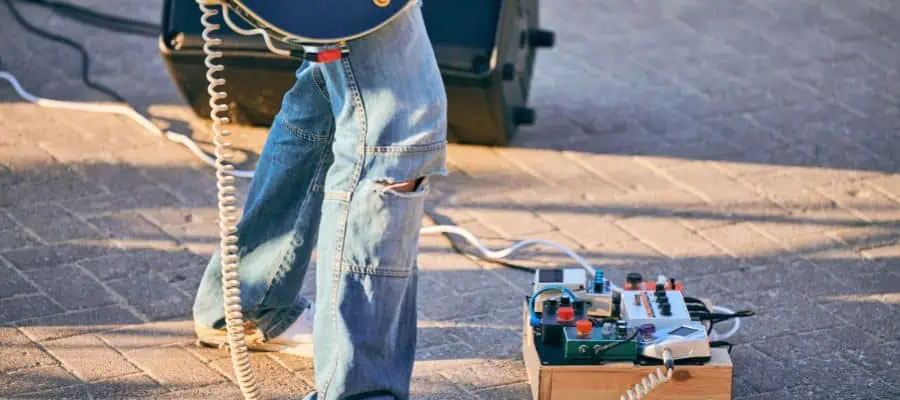
If you turn on the volume on the first gain pedal in the chain, you will not raise the volume but the gain in the second pedal. So, in a basic equation, volume before gain means more gain, while volume after gain means more volume.
EQ Pedal For Finetuning Dirt Sounds
Having an EQ pedal after the gain pedals can help you on the way to finetune your dirt sounds. Also, you can use a distortion pedal with good EQ adjustment options, as the last step can work the same way.
Listen to the Pedals Alone to Decide their Order
Every pedal has an inherent EQ curve, which is important for deciding where in the chain to use the pedal. So, figuring out how the pedal sounds alone is crucial for the decision.
Find The Sweet Spot Between Adjustments
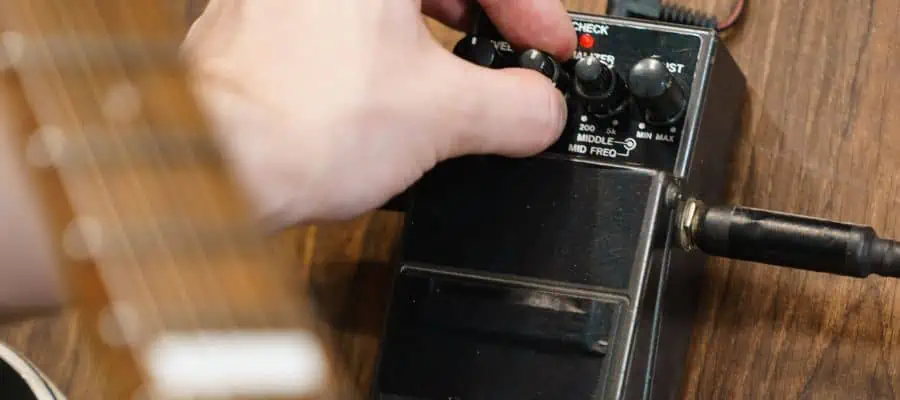
You have to find the sweet spot between the pedals to have a good distortion tone without hissing or humming. Also, too much gain or volume can lead to handling noise, compression, and bad EQ levels, and in the end, it can make your tone sound smaller instead of making it bigger.
Amps for Gain Stacking
You can also use gain stacking with an already distorted amp to add more depth and level to your tone. For instance, a Fender amp on the edge of the break-up with a Klon-style boost-OD, as well as TS with a Plexi, are very popular combinations that are heard in many recordings.
Experiment
While these are general tips to get the most out of gain stacking, these are not golden rules. Most of the great tones come with experimentation to fit in different scenarios.
Different Drive Categories
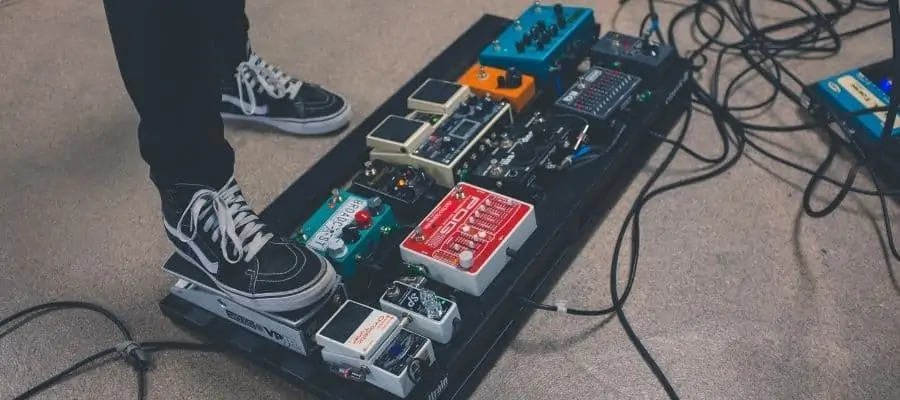
- Transparent drives have flat EQ levels and are based on the Bluesbreaker. JHS Morning Glory and Wampler Pantheon are some of the popular options.
- K-Type drives are inspired by the Klon Centaur and sit somewhere between the TS and transparent drives. Electro-Harmonix Soul Food and Wampler Tumnus are some of the famous ones.
- TS-style drives, which are based on the famous Tubescreamer and OD-1, are some of the most popular gain pedals. Ibanez TS9, Fulltone Full-Drive 1, and JHS Bonsai are some of the first ones that come to mind.
- Amp-in-a-box Drives are special pedals that are created to imitate how a specific amp sounds. Wampler Plexi-Drive, Friedman BE-OD, MXR EVH 5150, and Rockett Audio Designs The Dude are some of them.
- Clean Boost pedals are created to boost your sounds without adding too much color. Xotic EP Booster, Seymour Duncan Pickup Booster, and MXR 293 Booster Mini are some of the popular ones.
- Dual Drives offer two different gain colors in just one pedal. BOSS JB-2 Angry Driver, JHS Double Barrel, and EarthQuaker Devices Hoof Reaper are great choices.
- Unique Drives are specific gain pedals that do not fit into any previous categories. They stack amazingly well, and BOSS Blues Driver, Fulltone OCD, and Xotic AC Booster are popular choices.
Conclusion
Gain stacking, which means using multiple distortion pedals in the signal chain, is a great way to add more depth, color, and saturation to your dirt tone. Using two distortion pedals can enhance your sonic palette, give you new sonic possibilities, and allow you to create personalized sounds.
However, you have to experiment and find the sweet spot between your pedals to avoid excessive clipping, muddiness, humming or hissing, weird EQ, or any unwanted noise. Keep the tips in mind and start experimenting to create your unique distortion tone!
If you found this article useful, you may want to save this pin below to your Guitar board.
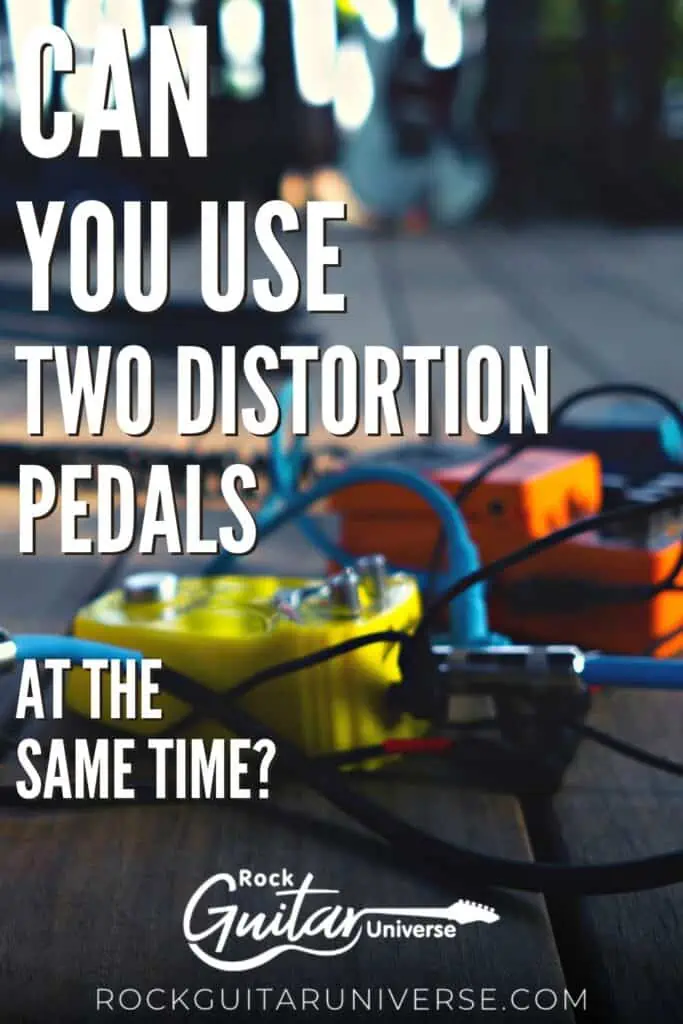
Recent Posts
Some guitarists insist on buying an expensive amplifier with their electric guitar. They assume that this is a must for every type of guitarist out there. However, in some situations, this isn’t...
Top 50 Free Realistic Guitar VST Plugins With Sound Examples
As technology has rapidly advanced in the recent decade, computers are stealing more and more roles from physical musical instruments and accessories. Nowadays, you do not need expensive amps,...

